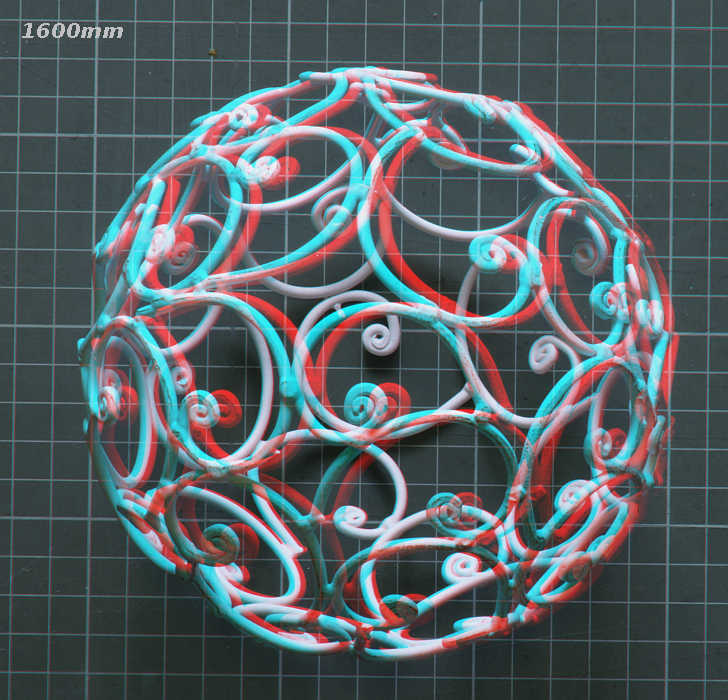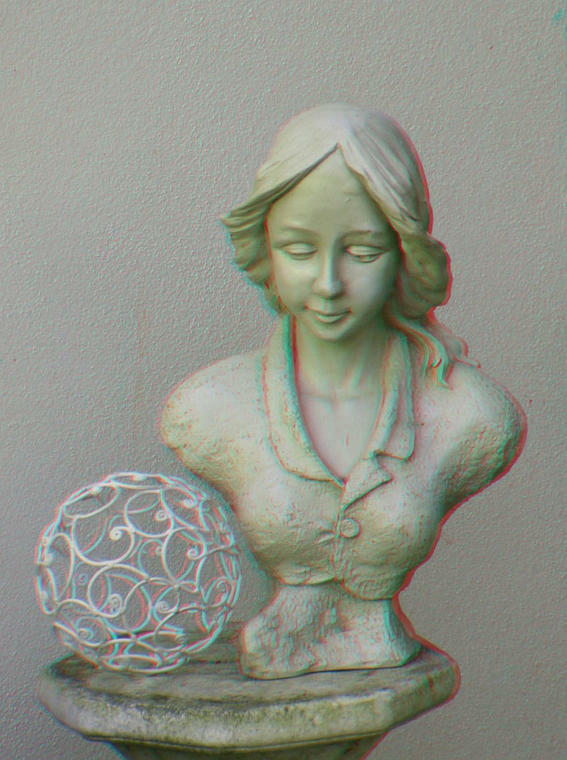Roundness:
Conclusions and Comments
Contents for Stereoscopic Perceived Depth (Roundness)Conclusions and Comments on roundness Equations for perceived depth: S&S: 2 John Hart's equation for roundness |
Conclusions
-
From the previous page, you understand why the undistorted viewing distance for any 3D image is not the same for everybody, because it depends on how far apart their eyes are.
-
Correct Viewing distance is also not the same for all stereo images, because it depends on the stereo base and distance to the nearest object at the time of photography.
-
It is necessary to set up stereo base separately for each viewing distance that will be used. That is quite a problem if you are making 3D for the big movie screen, but then want to show it on computer screens, where it will look very flat. Also it is hard to set up a big 3D movie on a work station, because the stereo roundness is less than the projected image will show on a large and distant cinema screen.
-
Notice how roundness has nothing to do with magnification, which means the focal length of the camera or projector lenses do not come into it. Actually the John Hart analysis suggests there is a small contribution from magnification in cinema 3D. I have no experience with big screen 3D and cannot comment on Hart's result.
-
The correct viewing distance for a stereo pair is set at the time of photography by the Base / Nearness ratio. B/N is locked into the picture, no matter how much it is enlarged or reduced subsequently. This is Relative Parallax Invariance.
(See also Perspective Invariance, which means the perspective recorded by a small camera is the same as that shown with a big camera, when:
1) the distance from the camera lens to the subject is the same for each, or N is constant
2) The field of view of the cameras are the same.
This happens when the ratio between image size and focal length is the same in the two cameras, assuming they both use the same aspect ratio. ~ Whew.) -
Floating windows do not change the correct viewing distance. I still don't believe this, but that is how it panned out.
-
Roundness is said to be better with a wide angle lens.
It is not the lens doing that, it is the camera moving closer to the subject in order to keep the frame filled. -
Roundness is worse with a telephoto lens.
The lens cannot flatten perspective, although people often say that. Perspective drops off with distance anyway but things looks smaller and we do not notice it has happened. A telephoto lens (or a pair of binoculars) only magnifies the normal drop in perspective when things are far away, so we can see it. Now add in the stereoscopic factor causing a poor roundness in telephoto shots, which is the ratio V/N (viewing distance / nearest object distance). V/N has got very small in long distance stereo pairs. The cure is to increase the stereo base, rather than getting closer. Near to an angry tiger for example. See the PePax principle. Geometric Perceived Depth (GPD) drops by the square of the distance while parallax drops linearly with distance.
BUT there are severe limitations to increasing the stereo base to restore roundness and it will only work if the background is close enough. Otherwise disparity will get so big that people cannot fuse the image. See the Berkovitz formula (from 1st edition of this web site.) -
Roundness and maximum acceptable disparity (MAD) are at war with each other and you cannot always have both at once.
-
Perspective and roundness vary independently of each other and are only "correct" close by. In distant scenes roundness drops severely (by an inverse square law), while perspective only drops linearly. Ultimately, perception of depth in the distance is taken over by monoscopic clues, stereoscopy having failed. The different behaviour of perspective and roundness means they do not work together properly when you use telephoto or wide angle lenses. Using non-standard focal lengths causes distortions, like the "puppet theatre effect" we will discuss later.
-
The 1/30 rule for setting stereo base is a special case. It is a good rule for a viewing distance of 2 meters. Stereoscope lens focal lengths are often chosen to make the virtual viewing distance 2 meters.
This means the common stereo cameras, having a fixed stereo base of near enough to 65mm, should take pictures 2 meters from the nearest object, (N = 2m). The camera focal length should be standard for the format and the stereoscope focal length should be exactly the same. That makes the camera and stereoscope field of view identical. The stereoscopic depth will then look "real," with a roundness of 1. -
How many people sit 2 meters away from the computer screen? Now you know why stereo pairs taken by the 1/30 rule look too flat on your computer.
Part of the second edition of this web site, which is still growing. First edition.
Comments from others on Roundness


 conditions of your experiment. The key word in your observation is that viewing angles should be small enough to be indistinguishable from orthographic.
conditions of your experiment. The key word in your observation is that viewing angles should be small enough to be indistinguishable from orthographic. 